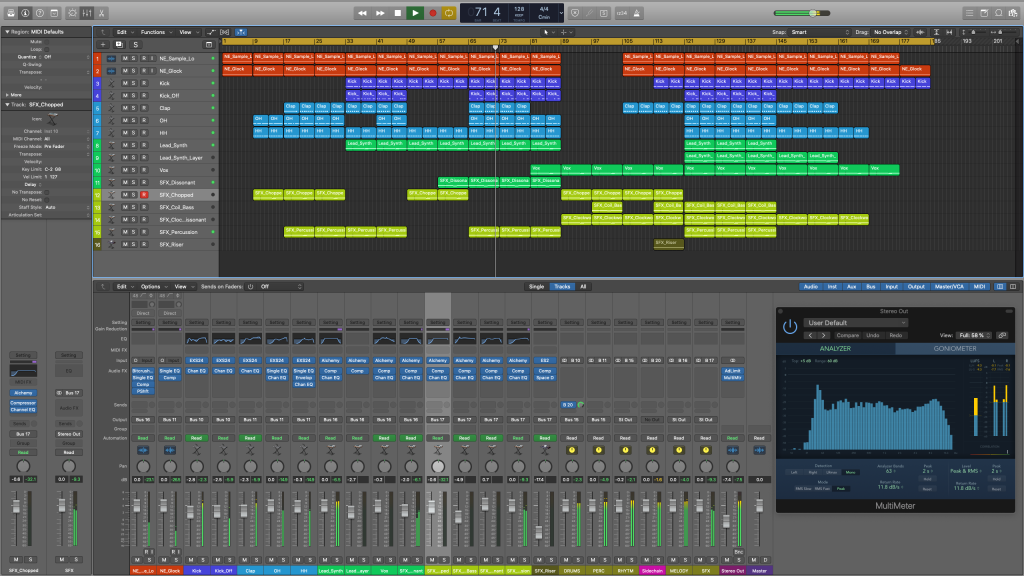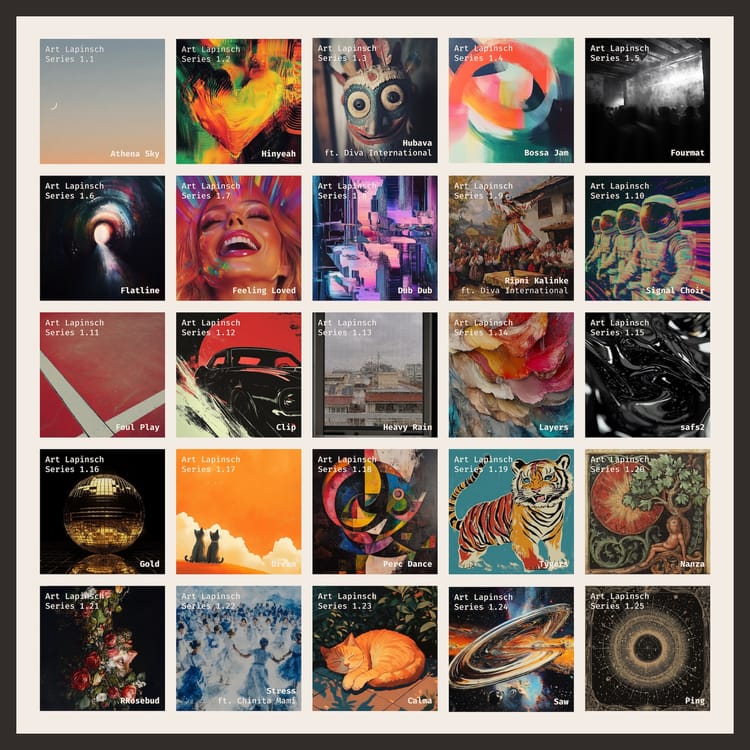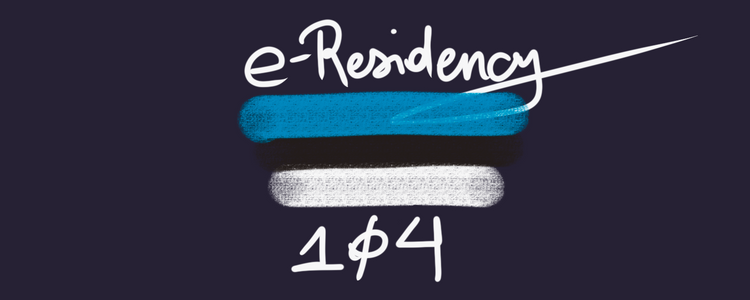Learning Logic Pro X: Getting Started with Music Production

Update: I produced and released my first solo album. It is on Spotify and Apple Music. Here's the story.
After years of daydreaming I finally started making music myself. 🎹
This post is mainly a collection of concepts/resources/links/learnings that have helped me.
Getting Started: First Tools and Projects
Selecting your Workhorse: Which DAW?
Real studio production is for the 1% (professional musicians/producers; people with a lot of money to spare).
For the rest of us music creation happens on a computer – specifically in a DAW (Digital Audio Workstation).
There are a lot of guides on the Internet, but effectively the decision comes down to the following:
- Budget: How much are you willing/able to spend?
- Platform: MacOS vs. Windows vs. Linux all might have different restrictions
- Network: What are your friends using and recommending?
- Preference: Familiarity with a workflow or certain features that you specifically want from your DAW.

My situation when deciding:
- I didn’t know if music production is just a momentary itch or rather a hobby I’d do mid-/long-term >>> hence didn’t want to spend too much
- I had a MacBook
- Most of my friends were using Ableton (b/c Berlin) but I heard that Logic Pro X & ProTools are standards in many studios across the world
Ultimately I chose Logic Pro X since it offers the full version for $199 (thousands of instruments, powerful stock plugins/effects, etc.) – I also considered Ableton Live 10 but it was significantly more expensive for the full version.
Most DAWs offer free trials (Ableton + Logic usually offer 90 day trials).
Other Tools: What Do You Actually Need?
Must Have
- Computer: Your computer is your studio
- Headphones: If you invest in one thing of equipment it should be a good pair of headphones (comfortable; good sound; good insulation [if you prefer]). I’m using a pair of Sony MDR 1000x headphones.
Next Steps
- Audio Interface: I use a Native Instruments Komplete Audio 6 to connect the various elements (headphones; studio monitors; midi input; external audio sources; etc.) of the setup.
- Midi Keyboard: Makes it easier to play/enter sounds in your DAW. I use a AKAI MPK mini mk2. Get’s the job done.
- Studio Monitors: Having headphones on 24/7 can accelerate ear fatigue. It helps to have an external source of sound. I currently rock a pair of presonus eris e4.5 on justIn stands so that the speakers are on head/ear level.
- Audio Recorder: If you want to start recording audio (guitar; voice; DJ set from mixer; ambient sound as samples) then a good audio recorder does the trick. I decided Xoom & Tascam recorders and went for the Tascam DR-40X since (1) it was recommended by a friend and (2) it seems that it does not need an attenuator when recording DJ sets.
Nice to Have
- Synthesizer: If you want to play around with a physical box instead of typing in commands into a computer keyboard you should go for a digital or analogue synth. I snagged a used Korg monotribe from ebay. There’s something about haptic play with instruments – it seems to accelerate ‘understanding/grasping’. // With them you can do all sorts of crazy modular synthesis as explained in the video below:
Picking Projects: Original Tracks vs. Remixes?
It’s much easier for me to deliver output if I have a deadline and accountability towards someone.
That’s why I decided to focus on remixes for a start. A couple of benefits I get out of that:
- Inspiration: Remixing means re-imagining an existing piece of music. You can use either element of the original (key of the track ; melody; rhythm; mood/vibe; etc.) – you don’t start from zero.
- Samples: If someone shares stems with you it’s legally cleared. Avoids headaches. (Let’s be real… at the beginning no one is going to listen to the music // chances are low that you get a letter from the rights holders). Still, better safe than sorry.
- Accountability: If you promise a remix you have to deliver. If not, your reputation suffers. That’s a good incentive.
My first project was a remix of a friend‘s track:
Music Production: From Idea to Track
So, you want to produce your first track. What now? 🤔
Core Idea: How to Find Inspiration?
I recently watched a Masterclass with Hans Zimmer (film composer) where he talks about starting with a core idea. Usually something simple enough to play with one finger on a piano. It is easier to expand a simple idea than finding simplicity in a complex idea.
When I start working on a pice of music I go through the following points:
- Emotion: Which emotions do I want to trigger? Is it rather melancholic or happy?
- Tempo: Is it fast or slow?
- Sound: Does the sound need recognizable elements? Classical music has orchestral sounds, Maya music has flutes and wooden mallets, etc.
- Inspiration: For a remix, do I like the vocals, the synth, the bass line, the percussion? What can I start with – remove the rest – and then build upon?
Building Melodies: How to Get Chord Progressions?
Music theory to the rescue:
Once I find a key I like I would search for standard chords and progressions in said key. An example for C minor would be the following:

This gives a good starting point to play around with melodies and standard progressions. Obviously, if you only stick to standard progressions it can sound predictable but that’s the joy of uncovering a melody that works for you.
Creating Depth: Sound Design and Layering Sounds
Layering is the name of the game.
Usually at this step I would do the following:
- Take the core idea and loop it as a 4-bar or 8-bar loop
- Add tracks/channels with new sounds to see what fits (try sounds across the entire sound spectrum: low / low-mids / high-mids / high)
- When all elements are in place tweak/adjust the sounds of each track/channel so that I like it
Building the Narrative: Arranging the Track
When all sounds are selected it is time to go from a repetitive 4-/8-bar loop to an actual arrangement. I usually go through the following steps:
- Structure: Think of simple arrangement structure (Intro > Beat Intro > Verse > Break > Verse > Breakdown > Buildup > Verse > Outro)
- Curation: Select which elements go in which section
- Listen: Listen from start to finish to hear what needs improvement (e.g. ‘sounds too busy’ > solution: ‘remove elements’; etc.)
- Rinse & Repeat: This step takes quite some time since now it’s detail work

Mixing/Mastering: Making It Sound Good
This step is still so far above my head but these videos have helped to grasp the basics of mixing:
* This section will be extended in the future.
What Helped: Simplicity & Hygiene
2 main ideas have been helpful:
Simplicity
- Core Idea: Finding a simple element as a starting point for production.
- Setup: Starting exclusively with stock/default plug-ins in Logic Pro X and going deep in the standard setup vs. remaining shallow in an abundance of 3rd-party plug-ins.
- Tracks: Keeping tracks simple at 10-15 elements max.
- Constraints: Time/tooling/idea constraints are a good and fuel creativity. That’s why I’m starting with remixes.
Hygiene
- Version Control: Save every major update to your track (e.g. new instrument added; drum pattern adjusted; etc.) is saved as a new version of the project (v001, v002, v003…)
- Backups: After a session save the latest version of your track in cloud storage or on an external hard drive.
- Shortcuts: Learn your tool and how to use it efficiently.
- Standardization: Standardize naming conventions for your tracks/channels (e.g. Lead_…; Vox_…; SFX_…) and bundle/color/route them for faster work.
Thank you for reading this post.
I’m always looking for collaboration opportunities, so if you are producing/mixing/etc. please get in touch.
Also, be kind to your ears.
🤘
Helpful Resources
- Learn music theory in half an hour. (Andrew Huang) – Good intro.
- Get started making music (Ableton) – Fun little introduction to making electronic music. Geared towards Ableton’s DAW/workflows.
- Logic Pro X – Video Tutorial Series (Music Tech Help Guy) – Best tutorial channel for Logic Pro X. Solid progression and goes into sufficient detail.
- How To Series (Julien Earle) – Amazing track deconstruction/production videos on various styles of electronic music. [recommended by my boys Man & Wife]
- Technique (Attack Magazine) – Great collection of tutorials/in-depth walk-throughs ranging from modular synthesis to beat programming.
- The Art of Production (Resident Advisor) – Producers talk about their philosophies and techniques. Very cool stuff.
- Rhythm Roulette (Mass Appeal) – Artists are blindfolded and pick 3 vinyls at random, then they have to come up with something interesting.
- Against the Clock (Fact Magazine) – Artists have 10 minutes to produce the basis for a track.
- Every Noise – Interactive overview of all styles of music (from latin tech house to jewish cantorial). Crazy!





